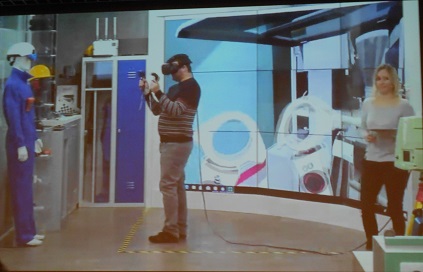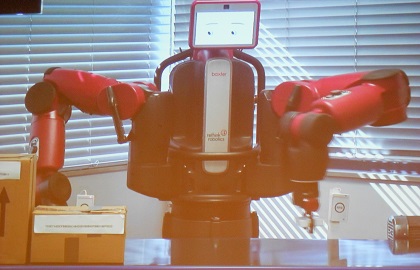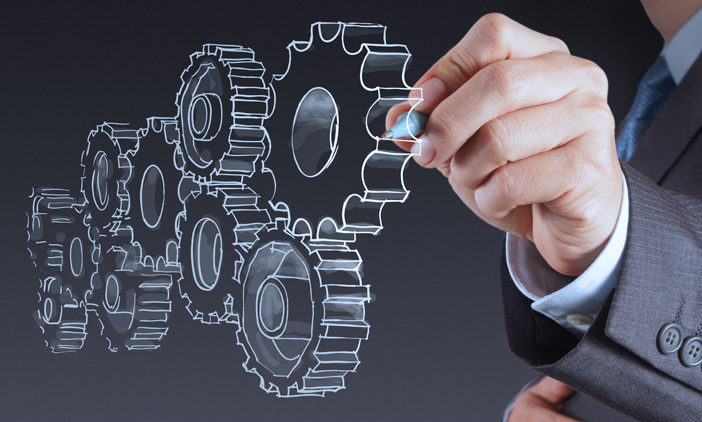Since business strategies are irretrievably linked to technology, organizations are completely redesigning their way of imagining and delivering technology solutions. They transform their IT teams into growth drivers for their businesses, and assign responsibilities such as back office systems, operations, and even product offerings.

Table of Contents
The “collarless” workforce: an amalgam of humans and machines that collaborate to fulfill certain roles and form new models of talent.
Are human resource teams ready to handle people and machines? As automation, cognitive technologies, and artificial intelligence become more popular, companies may be forced to reinvent roles within their workforce and assign responsibilities to humans, others to machines and others to an amalgam where technology enhances the performance of the human.
.jpg/_jcr_content/renditions/cq5dam.web.231.231.desktop.jpeg)
Sovereignty of Business Data: If you love your data, free them.
Making the data “free”, that is, information that is accessible, readable and usable across all business units, departments and regions, seems like a great idea, is not it? However, this requires new approaches to data architecture and governance and an understanding of global privacy and data protection requirements.

The new basic elements: unlocking the full potential of digital for the core business activities
Customer engagement and marketing dominated the first wave of digital innovation, and this is not surprising. However, attention is now shifting to core business activities, that is, administrative processes that reinvent work processes. The focus is on emerging technologies in order to build a business ecosystem.

The digital reality: the priority to opportunities rather than technologies
As our way of interacting with technology has evolved, the revolution launched by augmented reality and virtual reality has reached a tipping point, with corporate adoption having outpaced that of consumers. Market leaders are moving away from pilot projects and niche markets to strategies focused on prototypes designed for industrialization.

From the chain of blocks to the chains of blocks: the way is free for adoption and integration on a large scale
Now that everyone is comfortable with blockchain platforms, what are the next steps? It’s time for companies to begin standardizing the technology, talent, and platforms that will support future initiatives, and then coordinate and integrate multiple block chains across a value chain.

The imperative of application programming interfaces (APIs): from an IT concern to a corporate mandate
Do you consider your technology assets as assets, precisely? Companies design their technologies and establish their architecture as separate sets of reusable digital seats. The imperative of APIs requires the strategic deployment of services and platforms to be used both within the enterprise and externally.

Exponential Technology Checklist: Opportunities for Innovation on the Horizon
Leaders will have to deal earlier than expected with the expected but complex arrival of generalized artificial intelligence and quantum computing, as well as its significant security implications, among others. Leading organizations respond to these and other disruptive forces in a disciplined and innovative way to build the capacity they will need to detect, evaluate, analyze, test and evolve these opportunities, and give them momentum.

Five major trends have been identified for this 11th edition: artificial intelligence, virtual and augmented reality, the veracity of data, business “without friction” and the Internet of thought.
Citizen Artificial Intelligence
Companies are increasingly adopting artificial intelligence, but to capitalize on its potential, they need to be aware of its impact and potential. As the capabilities of AI and its impact on our lives grow, businesses need to “educate” their RNs to behave as full, responsible and productive members of society. This involves changing the way companies view AI from programmed systems to a learning system. Certainly, technologies learn from humans, but if we educate them they can even go further. With AI, technologies will become smarter and more automated.
Virtual and augmented reality
Virtual and augmented reality technologies remove the distances between people, information and experiences, transforming the way we live and work. Virtual or augmented reality allows any individual to be teleported to a new environment. Today, immersive experiences are common and solve the problems of distance. However, we are only at the beginning of the possibilities for teleportation. Much remains to be imagined and developed to improve the perception of its presence in another place. These technologies have an incredible potential in terms of training, since they will allow a worker, for example, to apprehend a site even before he is on site.
The veracity of the information
The veracity of information is a key factor. Indeed, it is necessary to rethink the way in which companies exploit many data, but first of all make sure of their veracity and be sure to send the right information to the right people. Indeed, false or manipulated information is becoming more common today, threatening the perception of companies in their planning, operations and growth … especially as decision-making is increasingly based on these factors. data automatically. Fortunately, the skills and tools needed to authenticate this information exist. By basing themselves on “data science” and cybersecurity, companies can build their own “data intelligence” and thereby build trust.
The business “without friction” or how to free the company in the economy
To grow, companies also rely on technology-based partnerships. However, their current systems are not suitable for large-scale partnerships, and are not designed to support such rapid and agile evolution. Relationships, on the other hand, must become more relevant and personalized with customers and employees. To work more efficiently in an ever more integrated way, companies must first reorganize and develop tailor-made partnerships, based on micro-service architectures. The blockchain is an interesting way of thinking about how to work as fast as digital. The major challenge: free the company in the economy.
“Internet of Thinking” or the Internet of Thought
Today, companies are betting on intelligent environments based on robotics, AI and immersive experiences. However, to give them life, the technical infrastructure also must evolve. Integrating a company into the surrounding world does require an architectural transformation. This involves a new balance between the cloud and edge computing, as well as a hardware review to make stock and the Internet smarter.

Immersion at the heart of these new trends
Each trend is based on Accenture’s observation of this innovation. In order to image these trends and make them more concrete in relation to the uses that can or could be made of them, Jean-Baptiste Delinselle and Gilles Casteran contacted the Accenture showroom of Sophia Antipolis, via videoconference with two from their colleagues. This showroom reproduces real life and has, to do this, reconstructed the district of a city center as we live it everyday, with streets, shops … but “futuristic” version. For example, there is a commercial agency, which uses artificial intelligence techniques to scan the heads of its customers and analyze information about each person (gender, age …). Chatbot technology is also under study and development, as is biometrics, which is used to verify customer identities. As mentioned earlier, the Internet of thought is also a major trend today. Indeed, in each living and living area, where the citizen will use data from the Internet or connected objects to capture a certain amount of behavioral and environmental information, the goal today is to know how analyze these data and put them in relation to add value to the consumer. On the industry side, for example, Accenture is developing its Baxter robot, which is learning more and more information from the industrial chain every day. The teams are currently studying the different uses of blockchain technology to capture supply chain information, which is currently simulating the movement of parcels.

The use of augmented and virtual reality technologies makes it possible to extend the universe of possibilities. Thanks to these technologies, users can, for example, be trained remotely on some PLCs. The virtual reality headset teletransporte directly in situation and, through this, they can learn, manipulate, test … remotely, as if they were in a very real context. The goal of this type of technology is to learn to work together without being in the same room. We can for example also imagine tomorrow being able to visit the Accenture showroom in virtual reality, in a teleported way.The possibilities inherent to virtual reality and other trends mentioned above are numerous and transversal to all fields of activity today. However, we are still far from having imagined all the possible scenarios at the moment, so there are. But the future will tell us …
